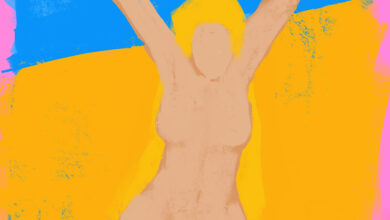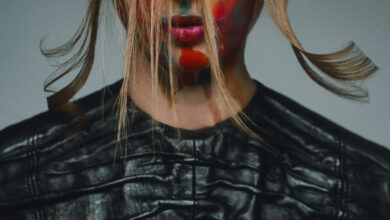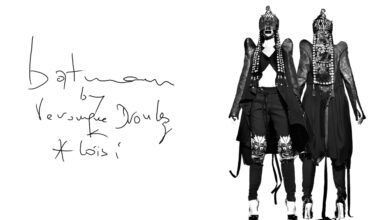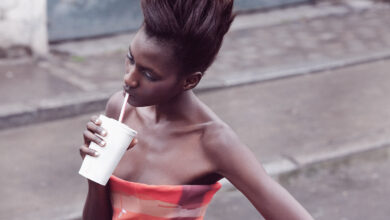ArtFashionZoot agenda
'COLOUR MOVES: ART AND FASHION' BY SONIA DELAUNAY, NEW YORK

A new exhibition at New York’s Cooper-Hewitt takes the visitors into Sonia Delaunay’s kaleidoscopic world.
Text by Anna Battista
“Simultaneous Orphism has produced praiseworthy new things in the field of clothing. These would have provided Carlyle with a curious chapter in his Sartor Resartus. The Delaunays are innovators,” wrote Apollinaire in 1914. Sonia and her husband, the French painter Robert Delaunay, brought indeed into art and fashion a genuine passion for bold colour schemes and patterns. Rather than trying to change the silhouette, shape and cut of the garments, Sonia Delaunay revolutionised clothes by using bold colour variations and combinations.
A new exhibition entitled “Color Moves: Art and Fashion by Sonia Delaunay” that recently opened at New York’s National Design Museum Cooper-Hewitt is currently trying to rediscover Delaunay’s work.
The event mainly looks at fashion designs from Delaunay’s own Atelier Simultané in Paris during the 1920s, as well as textiles designed for the Metz & Co. department store in Amsterdam in the 1930s and features examples of designs, textiles, garments and photographs from different private collections and museums such as the Musée des Arts Decoratifs and the Musée de la Mode de la Ville de Paris.


Born in November 1885 in Ukraine, Sonia Terk studied art in Germany and Paris where she was influenced by the colours used by the Fauvist artists. Her interest for bright colours developed after she married in 1910 Robert Delaunay, a painter and researcher into simultaneity.

Her first experiments in simultaneous paintings occurred in 1912-13 and were followed by her first dresses in 1913 and her designs for simultaneous books in collaboration with poet Blaise Cendrars.
Some of Delaunay’s first experiments in colour variations were showcased next to her husband’s Robert paintings in Berlin in September-November 1913.

The first simultaneous dress was actually made following the same process she employed to make a patchwork quilt for her son Charles. The dress was a mix – almost a collage – of geometrical and irregular forms, materials and colours. More experiments suspended between art, fashion and interior design followed, with Delaunay producing blankets, lampshades and curtains.
Her work was interrupted by the war, but, soon after it, she resumed her experiments and collaborations, creating the costumes for the Ballets Russes’ Cléopatre in 1918, and developed later on “poem-dresses” (robe poème – there are a few sketches included in the exhibition), that is garments that mixed colours and lines of poetry by different poets, among then also Tristan Tzara (she designed for Tzara the costumes for his production of The gas-operated heart, in 1923).
Around the ‘20s she created fifty patterns for a silk manufacturer and began a collaboration with Dutch department store Metz and Co. that sold her fabrics for fashion and home decoration.
Her tissues simultanés radically changed the garments or interior design objects in which they were employed. Delaunay also established a printing workshop, called Atelier Simultané (Gloria Swanson and Nancy Cunard were among the atelier fans) and experimented with wool and silk combinations and embroideries, inventing two new stitches, the point du jour and the point populaire.

Her textile designs were a triumph of stripes, zigzags, geometrical figures and spirals in bright colour combinations or in neutral shades with geometric designs worked in metallic, wool and silk threads.
In the meantime she continued creating costumes for the stage and even the big screen: among the most beautiful ones there are the costumes for the film Le P’tit Parigot (The Small Parisian One, 1926) directed by René Le Somptier.

In 1927 she gave a lecture on “The Influence of Painting on the Art of Clothes” during a conference at the Sorbonne. In her lecture she stated: “A movement is now influencing fashion, just as it influences interior decoration, the cinema and all the visual arts and it overtakes everything that is not subject to this new principle which painters have spent a century seeking: we are only at the beginning of the study of these new colour relationships, still full of mystery to unravel, which are at the base of a modern vision. There is no going back to the past.”

In 1931 Delaunay closed her couture house, foreseeing in a way the advent and success of ready-to-wear and spent most of her life concentrating on paintings. Her work influenced many famous designers, Yves Saint Laurent and Missoni included.

Critics and researchers often compare Delaunay’s work to that of Italian Futurists Giacomo Balla and Fortunato Depero. Yet the latter actually focused on transforming the cut of the garments, making them look more dynamic and provoking in this way a reaction in the wearer and in the people who saw the wearer walking in the street. Sonia Delaunay looked instead at the chromatic effects in her works seeking to provoke a response to surprising colour combinations, conceiving her creations as extensions of paintings. As she stated while looking back on her work: “Colour excited me. I didn’t attempt to analyse what I was doing. These were things that came from inside me.”
“Color Moves: Art and Fashion by Sonia Delaunay” is on at New York’s Cooper-Hewitt until 5th June 2011.






